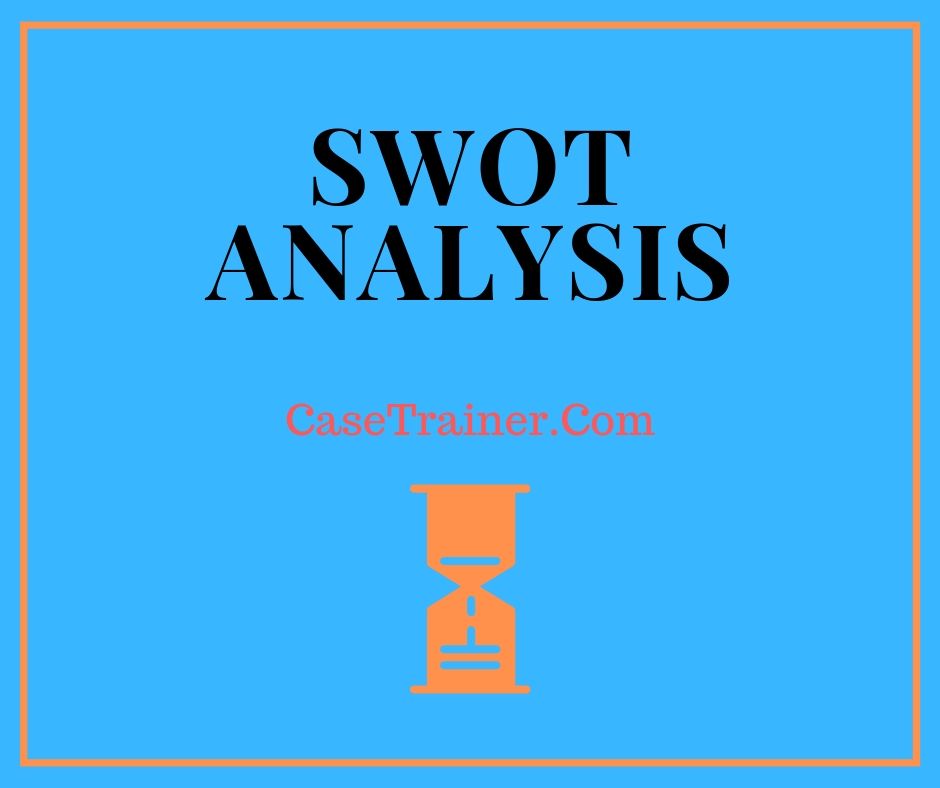Philips Marketing Plan Case Study Solution and Analysis
Intro
Philips Marketing Plan Case Study Help is the largest publishing business with a highest market share in the China's book retail market. CMP provides a number of services consisting of; collecting details, processing info and interaction services. Major company sectors of the company include; books, regulars, consultancy and distribution. The company has a large product portfolio and its significant products include books, periodicals, online media, exhibitions, research study reports etc. Philips Marketing Plan Case Study Help has actually become a specialized info supplier and a large comprehensive Science and Technology publishing company through the combination of print media, audio-visual media and the network media.
Important Problems
Although, Philips Marketing Plan Case Study Solution has spent its 60 years journey efficiently, being an effective publishing house, however, the altering macro market patterns and forces bring certain difficulties to the publishing industry in basic and CMP in specific. These aspects include;
• Entrance of the new publishing companies in the industry.
• Declining development of the publishing market.
• Market saturation.
• Intro of digital publishing methods
• Improvement of science and innovation.

The transformation of the macro markets have raised several concerns to the management at CPM that what could be the future of CMP in this scenario? Do the long important experience, technical resources and the capabilities of the business could be utilized to pursue the future advancement unceasingly? How could the business sustain its long term competitive position in future?
Situational Analysis
Internal Analysis
SWOT Analysis
Strengths
Philips Marketing Plan Case Study Solution has specific strengths that can be utilized to lower the dangers, conquer the weak point and get the opportunities. Strengths of CMP are provided as follows;
• The long term experience of Philips Marketing Plan Case Study Solution in the publishing industry i.e. 60 years allows the company to supply high quality products at a lower expense using its prior experiences.
• The technical resources and capabilities produced by its successful journey provide a competitive advantage to CMP.
• Large product portfolioof CMP helps it to diversify its risk and offer high worth to its consumers.
• Strong financial position allows the company to consider numerous development chances without any fear of raising fund externally.
Weaknesses
Along with the strengths, the company has specific weak points which might increase restrictions for the company in executing its advancement program. The weaknesses of Philips Marketing Plan Case Study Analysis are offered as follows;
• Despite of being a science and innovation publishing firm, the business still has traditional ways ofpublishing which are not suitable with the growing technological shift.
• CMP highly relies over the Chinese markets for its growth. It should propose certain expansion plans to prevent its dependence over the Chinese markets to attain long term growth.

Opportunities
Although, the growth of the publishing market is declining because 2008, impacting Philips Marketing Plan Case Study Help too, however the development might be restored by availing particular chances provided in the market. The marketplace opportunities for CMP consist of;
• The business might also introduce Digital Publishing by utilizing its long term technical experience and a strong consumer acknowledgment in the market.
• CMP might think about an advancement program through the growth towards foreign markets in order to decrease its dependence over Chinese markets by utilizing its large funds.
Hazards
The altering macro patterns in the market and increasing competitors in the publishing industry has posed particular dangers to Philips Marketing Plan Case Study Analysis including;( Gurel, 2017).
• Intro of digital publishing i.e. digital libraries could result in decreasing market share of Philips Marketing Plan Case Study Solution due to the customer shift towards virtual libraries.
• The presence of large number of competitors in the publishing market increase the threat for CMP to lose its competitive position in the market, as rivals can gain a strong consumer base by using specific techniques like aggressive promo, quality products, etc.
• Entryway of new publishing companies in the market together with presence of high competition increases the risk of losing the consumer base.
Financial Analysis.

Due to absence of data, the monetary ratios of CMP might not be calculated. It might be examined from the Appendix III that the yearly overall revenues of Philips Marketing Plan Case Study Analysis throughout the duration 2000-2012 are growing at a high growth rate, revealing that the annual need of the items of CMP is growing and the business is rather effective in bring in a big number of clients at a potential price.
Together with it, the 2nd graph which reveals the annual development in the Philips Marketing Plan Case Study Solution overall assets, shows that the business is quite efficient in adding value to its possessions through its revenues. The growth in possessions reveals that the overall worth of the firm is likewise increasing with increasing the total incomes. (Unidentified, 2013).
Another financial analysis of the company using the provided data could be the analysis concerning the distribution of overall profits of the company. Huge part of the incomes of CMP originates from the sales of its published books i.e. 64% as displayed in the Case Appendix V. The company might move towards other service sectors with a prospective growth to accomplish its future development objective.
PESTEL Analysis
PESTEL analysis could be conducted to find out the different external forces impacting the efficiency of the business and the recent patterns in the external environment of the business. A quick PESTEL analysis of the company is provided as follows; (Alanzi, 2018).
Political.
As the publishing sector could have a considerable influence on the mindset of individuals about the communist ideology of the federal government, for that reason, the publishing sector is highly supervised and assisted by the Promotion Department of the Communist Celebration of China. It might be said that the overall political forces affecting CMP service are high. The federal government policies regarding the publishing sector are likewise increasing with the passage of time.
Affordable.
Financial forces affecting the publishing sector in general and the CMP in particular includesthe rates of paper, the earnings level of customers, the inflation rate, and the overall GDP development of the country. All these forces integrate impact the need for the publishing market.
Social and Demographical.
Social and demographical forces consist of the population growth, the customer's preferences towards reading helpful products etc. China has the greatest population on the planet with a high population development, revealing the increasing variety of consumers of the Philips Marketing Plan Case Study Help. However, the customer choices are moving towards digital publishing rather than the conventional was of publishing. In this regard, CMP needs to concentrate on digital publishing to meet the altering consumer choices.
Technological.
Technological forces impacting the CMP include the technological improvement in the reading techniques etc. Improvement of science and innovation in addition to the increase of digital publishing might minimize the need for the CMP items, if certain actions would not be taken quickly.
Environmental.

Environmental forces impacting Philips Marketing Plan Case Study Help includes the concerns of ecological communities over the use of paper in publishing books. The paper used in the books while publishing is required to be disposable and the ink utilized while publishing should not be hazardous for the environment.
Legal.
Legal guidelines for the publishing sector at whole are high. Publishing Ordinance 1997 needs the publishers to be authorized initially by the Federal government to be gone into in the publishing market.
Industry Analysis (Porter's 5 Forces Design).
Porter's Five Forces Design might be utilized to examine the beauty of the publishing market China. A short analysis of the Porter's Five Forces is offered as follows;.
Hazard of New Entrants.
Hazards of brand-new entrants in the Chinese Publishing Market is moderate. The possible growth in the industry tends to attract new entrants to the publishing industry. However, the existence of extreme competitors and the requirement of big capital tends to demotivate brand-new entrants to go into in the marketplace.
Hazard of Alternative.
Hazard of Substitution is high for the Chinese Publishing Market. The replacement products for the released documents is the documents presented in the digital libraries on particular sites. The altering consumer choices towards digital learning increase the threat of alternative for the industry.
Competitive Rivalry.
Competitive rivalry in the publishing market is high. The existence of a great deal of customers in the Chinese Publishing Market like CIP, PTP and so on tends to produce high competitive rivalry for CMP. Together with it, new entrants are likewise participating in the marketplace increasing the competition for CMP.
Bargaining Power of Provider.
The significant suppliers of the Philips Marketing Plan Case Study Analysis include the suppliers of the paper for releasing files. As CMP is the biggest publisher in the Chinese Publishing Market, for that reason the overall bargaining power of supplier for CMP is low.
Bargaining Power of Buyer.
Haggling power of buyer in the publishing market is high. Due to the presence of a a great deal of publishers in the Chinese market and the marketplace saturation, the purchasers requires high quality documents at competitive costs.
Rivals Analysis.
CMP runs in a highly competitive market with the presence of large number of competitors. The business has a competitive position in the market with the greatest market share in the Chinese publishing market. Significant competitors of Philips Marketing Plan Case Study Analysis consist of;.
• Chemical Market Press (CIP).
• Posts and telecommunication Press (PTP).
Chemical Industry Press (CIP).
CIPis one of the close rivals of CMP. Founded in the very same duration, CIP releases similar type of books. For a big time period, CIP held the largest market share, and still ranks 3rd and second in various market sectors, with a major focus on academic publications. CIP functions as a risk for CMP as it might wean its market share due to its long term competitive background. CIP is concentrated on digital publishing and could wean the market share of Philips Marketing Plan Case Study Analysis quickly in the current market scenario.
Posts and telecommunication Press (PTP).
It was also established in the very same period as Philips Marketing Plan Case Study Solution and CIP. It is also one of the popular gamers in the publishing industry with a yearly total earnings of RMB 550 million in 2010.
Alternatives
Alternative-1: Expand towards New Markets
Pros
• Minimizing dependence over the Chinese markets.
• Increasing variety of Clients
• Development chances.
• Avoiding the impact of market saturation in the Chinese publishing market.
Cons

• Use of prospective resources in expansion.
• Threat of failure in new markets.
• Time consuming.
Alernative-2: Present Digital Publishing
Pros
• Sustaining consumer base.
• Approaching new markets.
• Easy to introduce utilizing existing capabilities.
• Low threat of Failure.
• Low requirement for funds.
• Increased product portfolio provides high worth to clients.
Cons
• Competitors in the market by CIP, who has prior concentrate on the digital publishing.
• Shift of focus from the core service segments to the new one can lead the company to lose need of its items in the market.
Recommendations
With the deep analysis of the external and internal environment of the business in addition to the market analysis and the competitor analysis, Alternative 2 is advised to CMP to accomplish its future development. As the preferences are moving towards digital publishing and the company require an immediate service to prevent the decreasing market development. Intro of digital publishing might prove to be an instant option with low quantity of threat for the company. The business could likewise consider the expansion program after the success of its digital publishing program.
Implementation
In order to present digital publishing in its item portfolio, the company must first gathers the data associated with the customer need, the potential markets, the federal government regulations and the data related to the competitors provided in the market. After that, the company needs to choose one possible sector for its initial offering. It ought to gather research that how it might separate its digital publishing from the existing rivals' items. After all the steps above the business ought to choose the preliminary offering. If the initial offering proves a success, the company must choose the other markets. In this method the business would have the ability to execute its digital publishing program.
Conclusion
The development of the publishing industry is declining since 2008, revealing a danger to the company's long term existence, however the circumstance can be managed by considering an advancement strategy in the future. The business might consider introducing digital publishingin its existing market to implement its advancement program at instant basis and to avoid the danger of failure for entrance in the brand-new markets.

